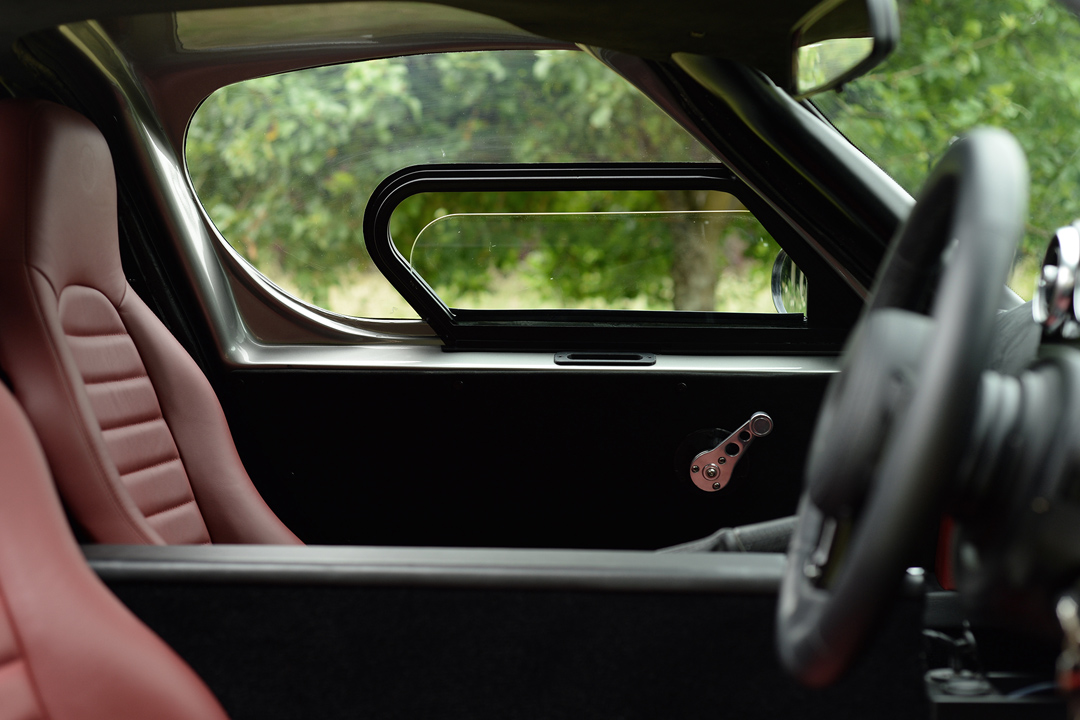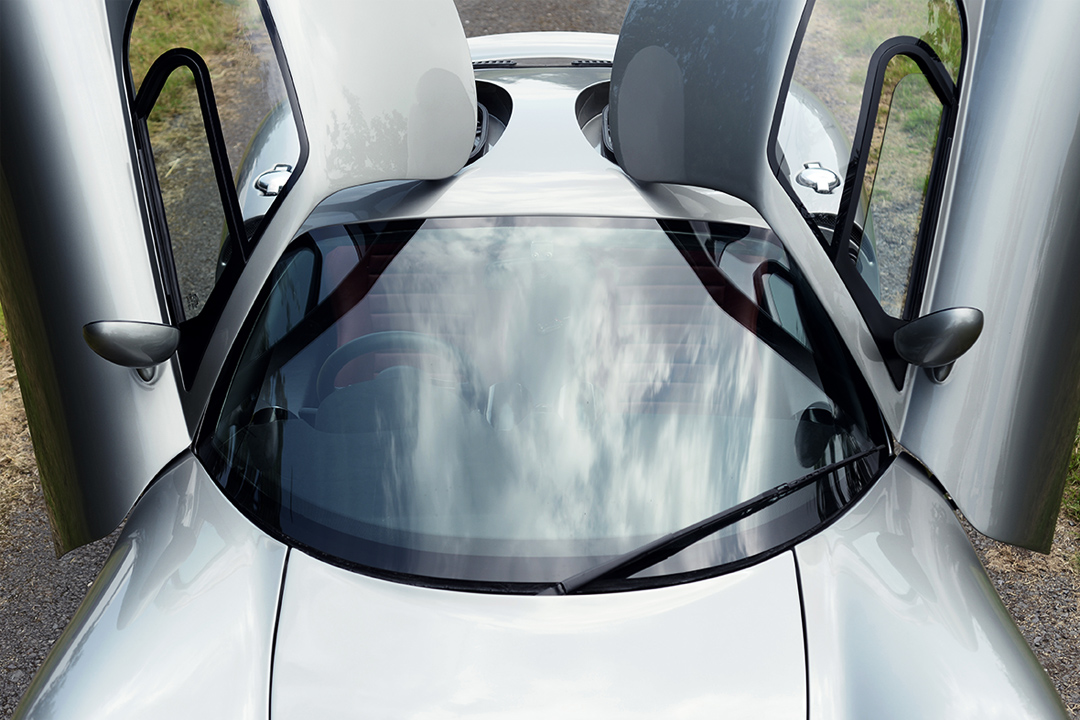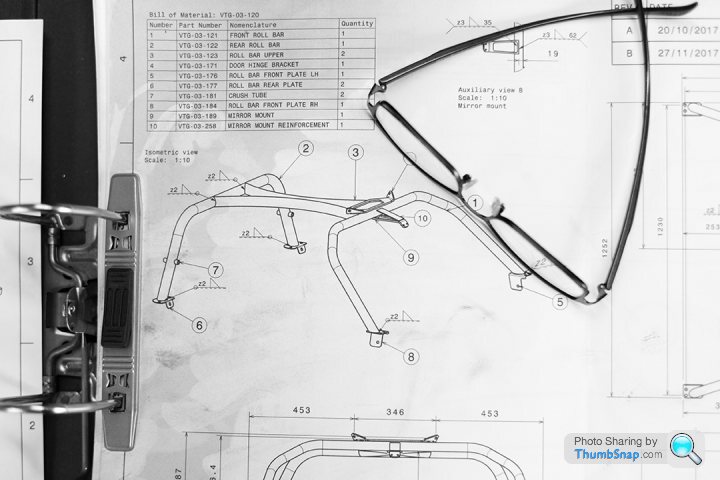Wells Vertige - New British sportscar
Discussion
kambites said:
...there must be a reason the instrument binacle is integrated into the dashboard like that, but I can't quite work out what it is!
My guess is that the binnacle itself is attached to an adjustable steering column (something else the Elise lacked, of course), so that by moving with the steering wheel, you don't obscure your view of the instruments as the wheel is adjusted.Equus said:
kambites said:
...there must be a reason the instrument binacle is integrated into the dashboard like that, but I can't quite work out what it is!
My guess is that the binnacle itself is attached to an adjustable steering column (something else the Elise lacked, of course), so that by moving with the steering wheel, you don't obscure your view of the instruments as the wheel is adjusted.kambites said:
Equus said:
Even against cars with a structural roof, the quoted stiffness is pretty damned impressive, in something so light (and not constructed of exotic materials).
True, but the question I'd ask is whether it actually gets any benefit from it. nearly 50k Nm/degree/tonne is very impressive on paper, but you can get no perceivable flex at half that so in what way is the higher figure actually "better" in any meaningful sense? like I said:
I agree that such stiffness probably goes well into the realms of diminishing returns in terms of actual handling benefits, but if you can achieve it without any major cost or weight penalty, why wouldn't you?
Fair enough, but if it provides no benefit I can think of various reasons you wouldn't, the most obvious one being that it would take less design effort and to produce a less rigid tub (or every closed roof car would have this sort of rigidity), which would ultimately bring down the R&D costs of the car and hence either reduce the price or increase the profit margins.
But yes from an intelectual standpoint I'd love to see the chassis/cage without the body on it.
But yes from an intelectual standpoint I'd love to see the chassis/cage without the body on it.
kambites said:
Fair enough, but if it provides no benefit I can think of various reasons you wouldn't, the most obvious one being that it would take less design effort and to produce a less rigid tub (or every closed roof car would have this sort of rigidity), which would ultimately bring down the R&D costs of the car and hence either reduce the price or increase the profit margins.
Less design effort and R&D costs than, for instance, coming up with an extruded and bonded aluminium system that performs considerably worse?I know we all like our technical gimmickry, but if one man in a shed can manage it out of cheap, folded sheet steel, which is the better design?
Equus said:
Less design effort and R&D costs than, for instance, coming up with an extruded and bonded aluminium system that performs considerably worse?
Of course, but Lotus set out from the outset to create a car which didn't have a roof (or indeed, in its original design, doors). I very much doubt the extruded/bonded chassis would ever have seen the light of day if the Elise had been a hard-top. For this sort of car (ultra-small volume, fixed-roof, hand assembled), as you say, a spaceframe is probably a better solution.
Edited by kambites on Sunday 11th July 10:27
I doubt the rigidity figure is wrong, they make quite the claim about it;
https://wellsmotorcars.com/vertige/technical-speci...
I think I'm correct in saying the roof structure is underpinned by an FIA spec roll cage no doubt adding to the rigidity.
https://wellsmotorcars.com/vertige/technical-speci...
I think I'm correct in saying the roof structure is underpinned by an FIA spec roll cage no doubt adding to the rigidity.
LaurasOtherHalf said:
I think I'm correct in saying the roof structure is underpinned by an FIA spec roll cage no doubt adding to the rigidity.
Almost certainly, but with that design of car (with the doors encroaching into the roof so much) it's still a very impressive figure. In fact it would be an impressive figure for any type of car; it's considerably stiffer than most carbon tubbed supercars. kambites said:
I guess the big difference compared to the Lotus 111 platform is obviously the structural roof, which both makes it more rigid, means the sills are smaller, and sadly means they can't really make a convertible version without significant compromise.
The Vertige also has a noticeably high central tunnel between the occupants; I remember hearing the C8 Vette is the same, in order to achieve the required stiffness but also make it possible for the average Vette owner to get in. I guess that may help too.
kambites said:
Of course, but Lotus set out from the outset to create a car which didn't have a roof (or indeed, in its original design, doors). I very much doubt the extruded/bonded chassis would ever have seen the light of day if the Elise had been a hard-top.
We're going round in circles, but as I've already said, if (yes... if) the quoted figure is correct, then there is every chance that it would remain considerably stiffer than the Elise, even sans roof.Ironically, the M100 Elan (which very definitely was conceived from the outset as a roadster) had a very similar level of torsional stiffness (9 kNm/deg) to the Elise, despite relying on Lotus' traditional folded sheet steel backbone.
There is evidence that Lotus' aluminium VVA is actually falling behind more conventional steel structures (witness the Evora's stiffness, and the Emira's weight, versus the Porsche Boxster/Cayman), so you have to start asking yourself when cleverness for cleverness' sake starts becoming a liability.
Equus said:
There is evidence that Lotus' aluminium VVA is actually falling behind more conventional steel structures (witness the Evora's stiffness, and the Emira's weight, versus the Porsche Boxster/Cayman), so you have to start asking yourself when cleverness for cleverness' sake starts becoming a liability.
Was it ever actually lighter than a well designed equivalently stiff steel structure? Certainly the Elise was no lighter than many kit-car alternatives of broadly similar size and ethos such as the GTM Libra. I guess those cars had to jump through far less relgulartory hoops than the Elise, which probably helped them keep the weight down. I suppose the same is true of this in fact. I can't imagine it'll be properly EU type approved (although I hope I'm wrong)?
Edited by kambites on Sunday 11th July 11:24
kambites said:
Was it ever actually lighter than a well designed equivalently stiff steel structure? Certainly the Elise was no lighter than many kit-car alternatives of broadly similar size and ethos such as the GTM Libra.
The GTM Libra wasn't a steel structure. It was a GRP monocoque (and as such, whilst a clever and competent design, it was completely unsuitable for production in anything like the volumes required by Lotus).Equus said:
kambites said:
Was it ever actually lighter than a well designed equivalently stiff steel structure? Certainly the Elise was no lighter than many kit-car alternatives of broadly similar size and ethos such as the GTM Libra.
The GTM Libra wasn't a steel structure. It was a GRP monocoque (and as such, whilst a clever and competent design, it was completely unsuitable for production in anything like the volumes required by Lotus).Equus said:
Looks like that could be kept unchanged for an open or targa-topped version?
If you look at the car with ths doors open, the roof already pretty much follows the shame of the roll-bar. 
You could cetainly make it into a sort of fat targa.
I think you must be right about the strength of the underlying chassis though because that roll-bar is not particularly well braced. It's obviously going to add a fair bit of rigidity but not as much as you'd get from a roll cage with a proper triangulated roof section. I wonder if the overall stiffness comes from the fact that they originally designed the underlying chassis for an extremely stiff open-top car (say 25-30k Nm/deg) then decided to add a roll-bar for safety. It would certainly expain the rather excessive overall rigidity figure. I'm still fascinated to see the chassis though; as you say that high centre tunnel has to be a large part of it.

Edited by kambites on Sunday 11th July 11:39
otolith said:
Can you achieve it without a weight penalty, or does it imply that you could have saved some weight with no material stiffness penalty?
Logic would certainly dictate tht they could have made it lighter at the expense of stiffness by using thinner walled tubing, etc. However, whether the weight saving would be significant is anyone's guess and using thinner, lighter steel might have made the car harder to manufacture as well - I believe thinner steel tubing makes it more difficult to create good structural welds (I have done very little welding myself, so can't speak from experience)?Gassing Station | General Gassing | Top of Page | What's New | My Stuff




